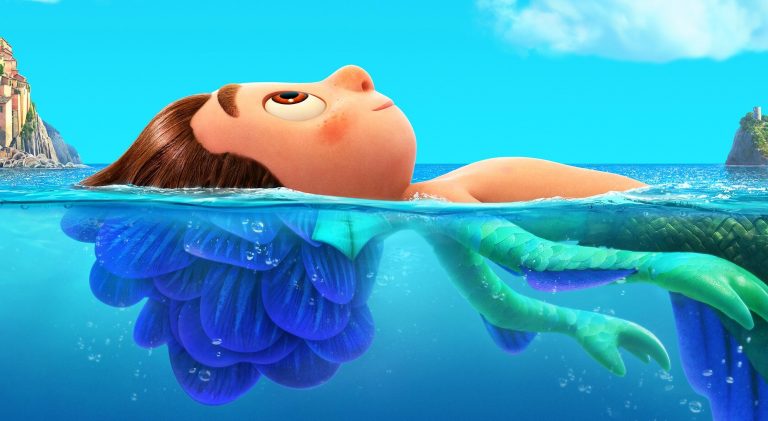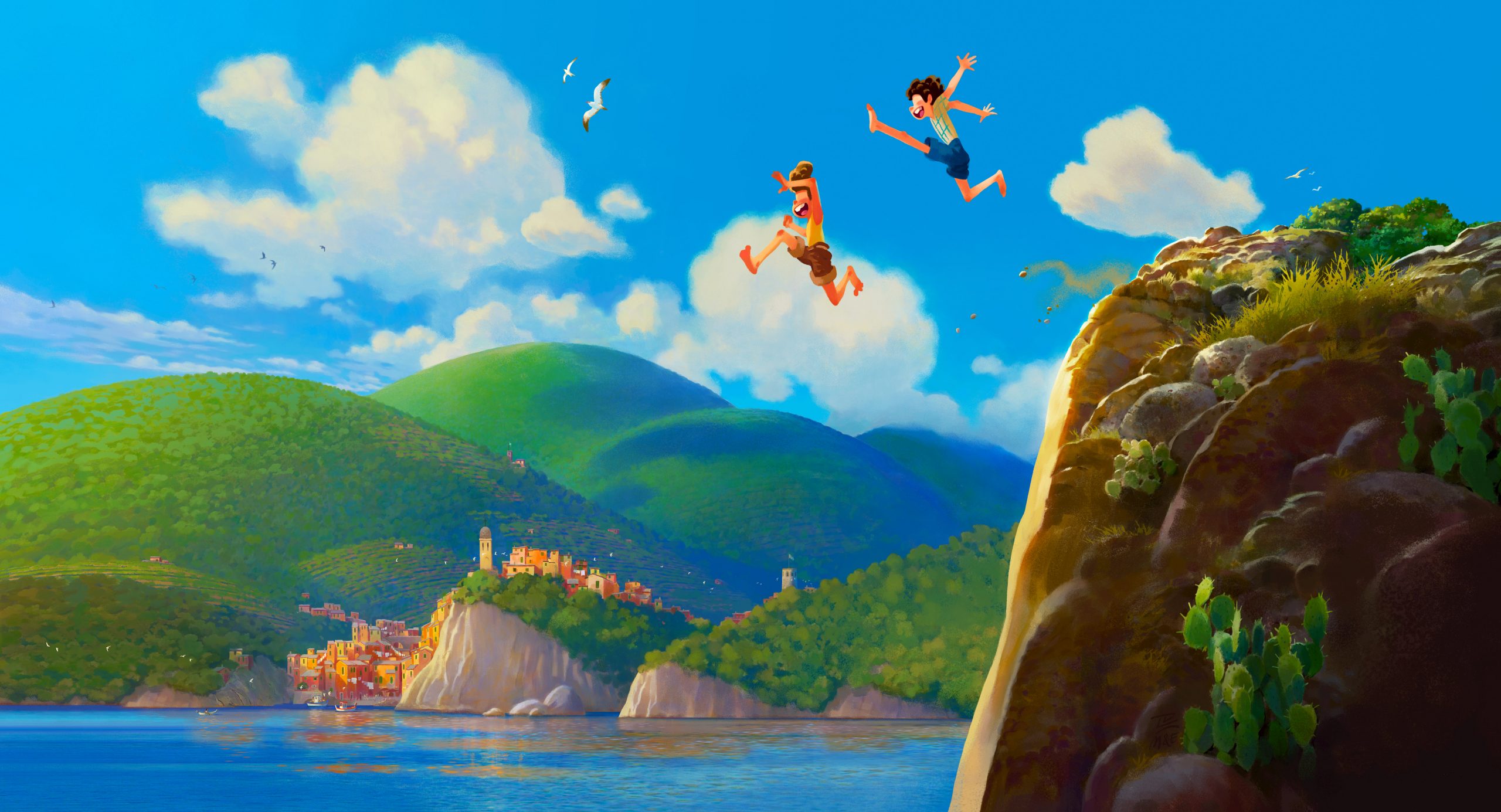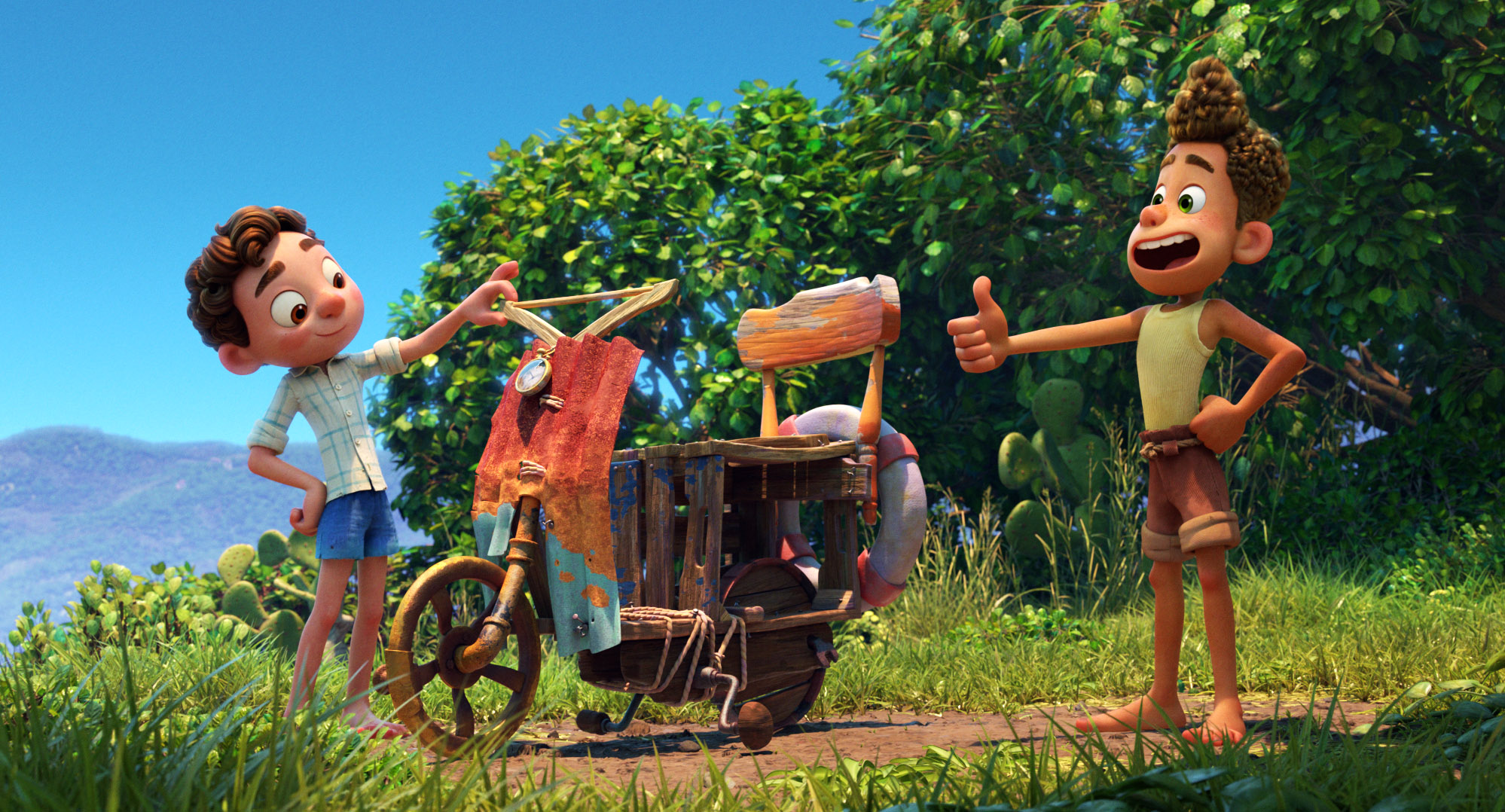
Pixar movies have brought Disney classics to an evolution, in terms of themes and empathy. Disney has always had the power to evoke dreamlike scenarios, through fairytale narratives that would primarily focus on romance, and Pixar expanded this uplifting skill, by creating stories and characters that would focus on self-affirmation. Those who populate these films show how they can become masters of their destiny and that love has many nuances, whether it is family (The Incredibles), toys (Toy Story) or friends (Finding Nemo).
The latest Disney Pixar film, Luca, brings this magic to its peak. The animation is a coming-of-age story about a young aquatic creature who turns into a human boy, once he rises above the marine surface, with his newfound best friend Alberto, who shares his same ability of metamorphosis. The two outcasts will experience an unforgettable summer filled with gelato, scooter rides and the chance to overturn prejudices surrounding sea monsters.

The film is wondrous for a number of reasons, starting with its cultural appreciation approach. The depiction of Italy and Italians, in American films, has often been a cliche of spaghetti, mandolins, Mafia, Mamma Mia and pinched fingers gestures, which have never felt close to home to the actual inhabitants of the Bel Paese. But this time, the director of this stars-and-stripes animation is a true Italian who has been living in the US for years: Enrico Casarosa. In 2012, he was nominated for an Academy Award for the animated short film La Luna, and he is now the first Italian to direct a Pixar feature movie. Originally from Genoa, Casarosa has decided to create a love letter to his region, and he does so by unveiling the Cinque Terre area, which is characterised by the centuries-old seaside villages of Monterosso al Mare, Vernazza, Corniglia, Manarola, Riomaggiore. All of these coalesce in the fictional village of Porto Rosso, in the Sixties. Thus, the Italian Riviera coastline is celebrated through its stupendous polychrome houses and harbours, filled with fishing boats, pescherie, latterie and trattorie.

Italy is in the details, as its references are scattered with apparent nonchalance, from an image of Marcello Mastroianni on the Vespa and a film poster of Federico Fellini’s La Strada, to Giulia’s cat named Machiavelli — blatant tribute to the Renaissance writer. It gets even better with the music selection, that includes the most iconic songs from the Sixities and Seventies, such as: Il Gatto e La Volpe by Edoardo Bennato, Fatti Mandare Dalla Mamma by Gianni Morandi, Viva La Pappa Col Pomodoro by Rita Pavone and Città Vuota by Mina. But there are also lyrical moments with the classical arias like, O mio babbino caro from the opera Gianni Schicchi by Giacomo Puccini and Figaro from Gioacchino Rossini’s Il barbiere di Siviglia.
Italy is obviously about pasta too, but definitely not spaghetti with meatballs, and Luca, quickly presents an array of the specialities that one can taste in the boot-shaped land, like fusilli, penne, cannelloni, lasagne and the glorious Ligurian trenette al pesto. Two other culinary hallmarks are present: the espresso and the focaccia — the flat oven baked bread, typical of the area. Liguria is glorified even after the credits, when the flag that is waving on top of Disney’s castle is a reinterpretation of Genoa’s coat of arms.

American actors provide their voices for protagonists Luca (Jacob Tremblay) and Alberto (Jack Dylan Grazer), the same with Giulia (Emma Berman), along with Luca’s family members, from his Grandmother (Sandy Martin), to his parents Daniela (Maya Rudolph) and Lorenzo Paguro (Jim Gaffigan). There is also an amusing cameo by English comedian Sacha Baron Cohen, who gives his voice to Luca’s eccentric Uncle Ugo. But the real treat and touch of authenticity comes from the fact that Italian voice actors were cast for many of the characters. For instance one can truly perceive a real Italian accent, and not a feigned one, when listening to Massimo Marcovaldo (Marco Barricelli), Ercole Visconti (Saverio Raimondo), local fisherman Giacomo (Giacomo Gianniotti), and Mrs. Marsigliese (Marina Massironi).
As regards the Italian words that are sprinkled here and there, some are very Italian like “mannaggia” “disgraziati” “porca paletta.” Then there are those that are fruit of the artistic license of the Disney production, like the amusing exclamations “Santa Mozzarella,” “Santo Pecorino,” “Santa Ricotta,” “Santo Gorgonzola.” But beyond words, Luca truly captures the atmosphere of the daily rituals one can experience in Liguria.
In these regards, Senior Editor of Non Solo Cinema, Ilaria Falcone, who is also the Editor-in-Chief of L’Alassino newspaper, and an instructor for the tide-march Alassio Wave Walking, has the proper competence to judge whether Luca provides an authentic portrayal of her region. She says that what struck her was how, “the picturesque and quaint atmosphere of laundry hanging from strings, that go from window to window, is truly authentic; just as the way children play with a ball in courtyards, even though it is not allowed, and there is always an old lady summoning them to stop.” Falcone, continues, “Another aspect that evoked my childhood in Liguria was seeing the fish cart going about town to sell seafood, or the way kids recklessly cycle downhill, I remember doing it plenty of times.”

Besides the dainty towns, the sea is protagonist and Ilaria observes the pertinence of Disney-Pixar’s portrayal. “The gravel on the beach is spot on, and of course diving in the sea from the cliffs is very typical, just like people sitting with their feet dangling from the dock; even the lookout towers for sightings, like the one where Alberto goes to, are very characteristic of the region,” she concludes.
The marine realm is intrinsic to the subtext of the film’s structure, whether through whimsical expressions such as “mother of pearl,” or with the witty playfulness in using fish names, such as Mr. and Mrs. Branzino (Sea bass) that we never meet, but that Luca’s parents Daniela and Lorenzo mention often. The very Luca has a fishy surname, Paguro (Hermit crab), just as his friend Alberto…Scorfano (Redfish).

All in all, the enchanting Italian seaside setting, serves as a mesmerising background for a broader exploration on the nature of change that distinguishes adolescence. The two friends they will help each other overcome their insecurities. The iconic leitmotiv is initiated by Alberto, who recommends Luca, to silence the vexatious voice of doubt out in his head, by saying “Silenzio Bruno!”
What unites the two puberty stricken marine-boys, is how they are affected by the charm of elsewhere, since “everything good is above the surface,” from air, to gravity, and all the things that humans have invented, first and foremost the Vespa they are dreaming about. Their zest for exploration of the world, that eventually in Luca transforms into hunger of knowledge, is an exquisite trigger throughout the story. This transition comes across as Luca’s copernican revolution, that will set him on the right track to reach his full potential.

However, the theme of friendship is not confined to the bromance between Luca and Alberto but expands to inclusivity of the other, as they get acquainted with Giulia Marcovaldo (the surname is a tribute to the collection of stories written by Italo Calvino). She is the human girl that they will befriend to compete in the Porto Rosso Cup — a peculiar triathlon characterised by swimming, cycling and eating pasta — to win the money that will allow them to buy their dream Vespa. This trio of underdogs is the epitome of Pixar’s inclusivity message, along with the way Giulia’s father, Massimo, is depicted without an arm, representing diversity without any fuss.
Every good story of solidarity requires an equally effective nemesis. For Luca, the villain is Ercole Visconti — whose name evokes Hercules and the surname from the Milanese noble family. He condenses both the competitiveness of the archetypical antagonist and the snobbish bully, who is concerned about looking impeccable in his outfits and never losing a competition. His treatment of his peers, Ciccio and Guido, as lackeys, creates a juxtaposition with the egalitarian friendship between Luca, Alberto and Giulia. The wholesome trio will join forces to try to defeat Ercole’s “evil empire of injustice,” bequeathing an inspirational example of what solidarity should look like. Children and adults alike, will be moved and entertained by Disney-Pixar’s Ligurian adventure, that will be available in streaming from June 18 on Disney +.
Final Grade: A

